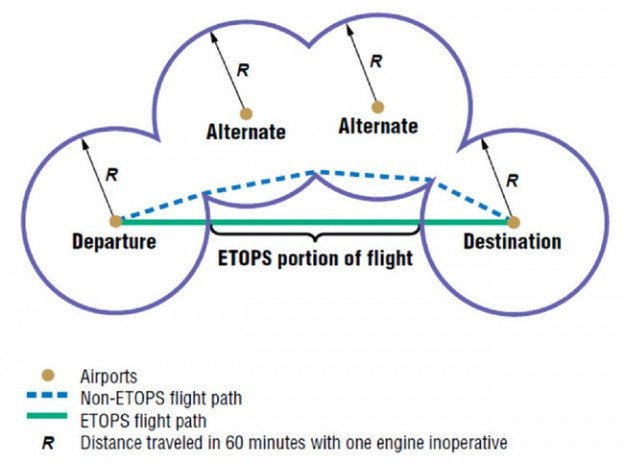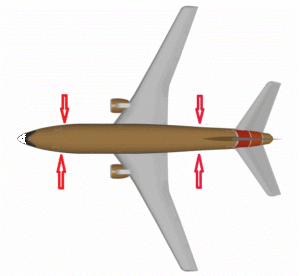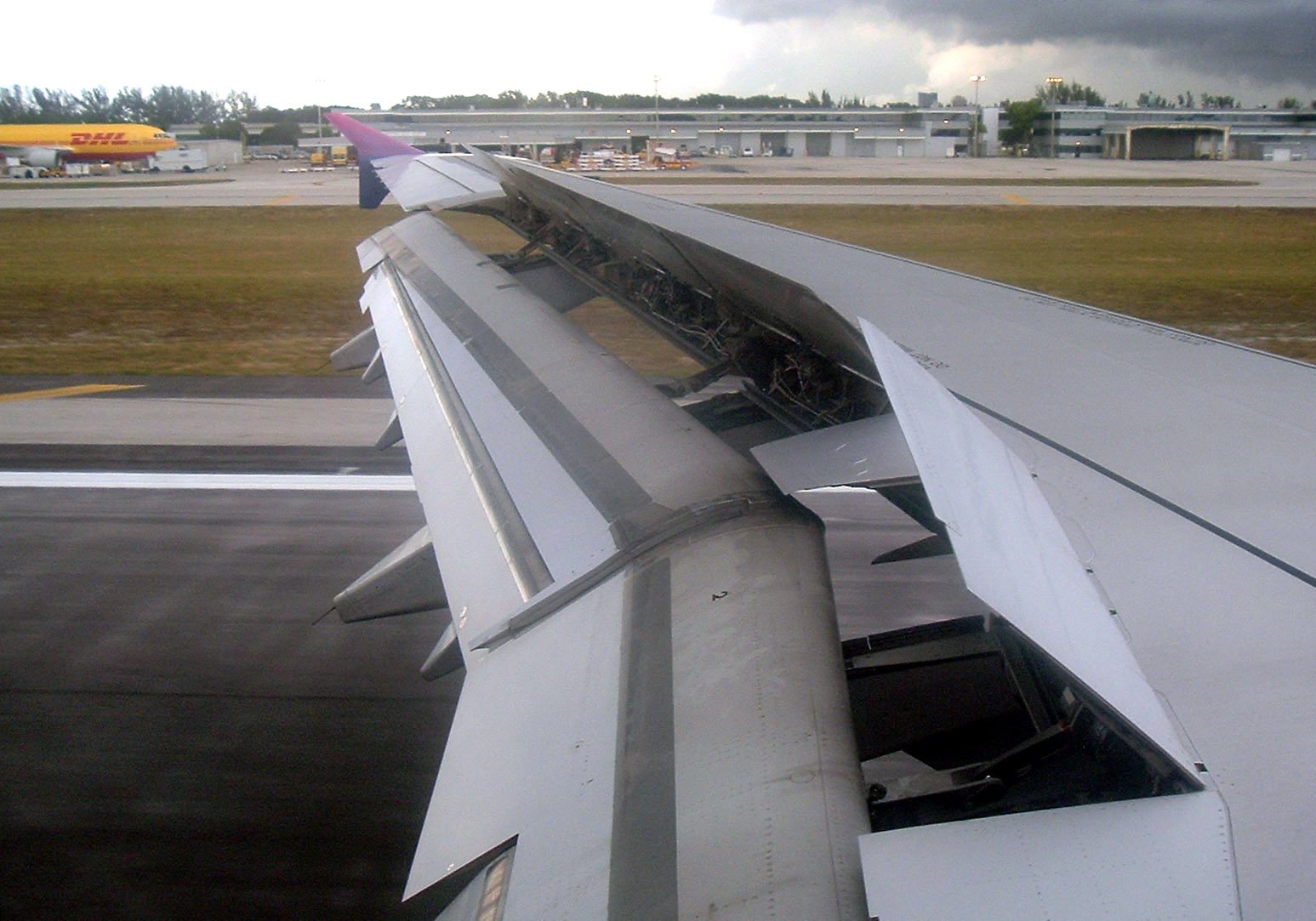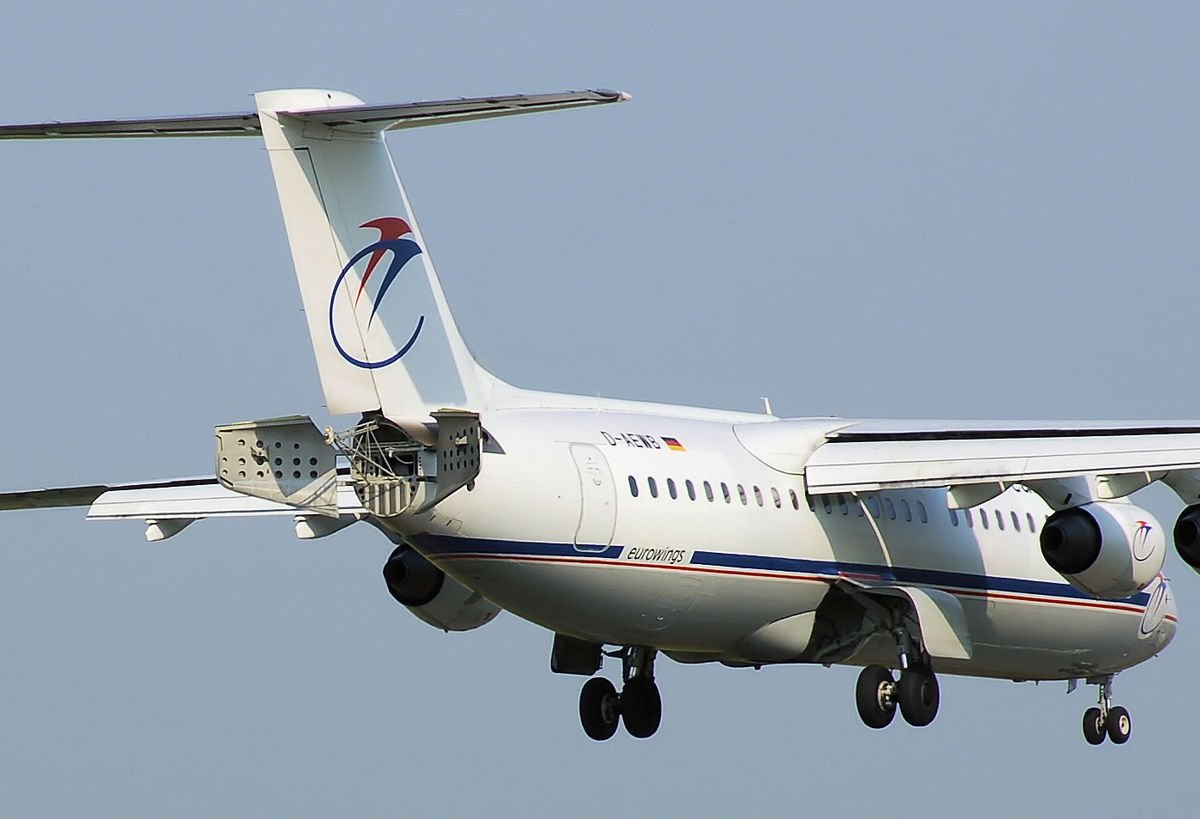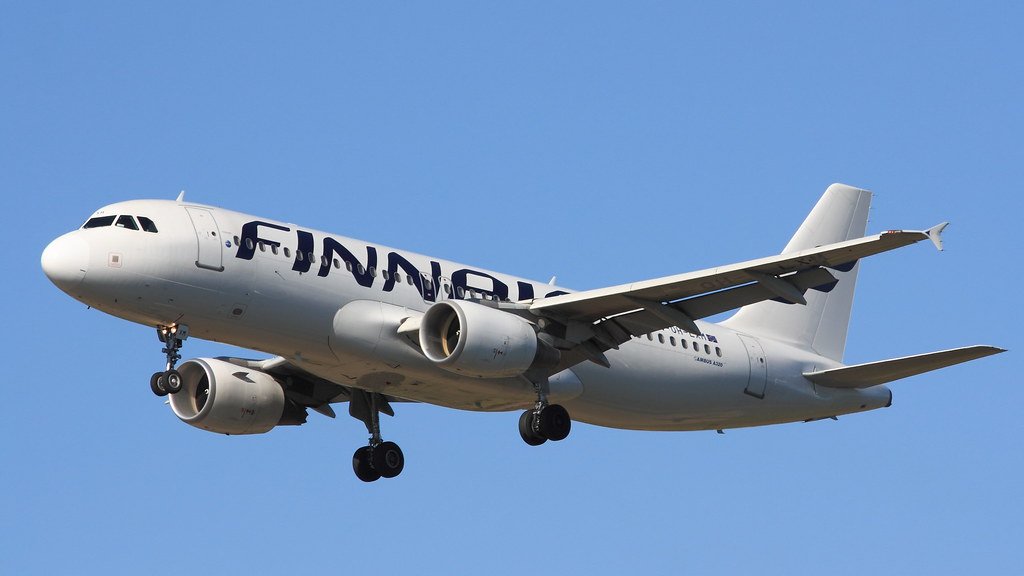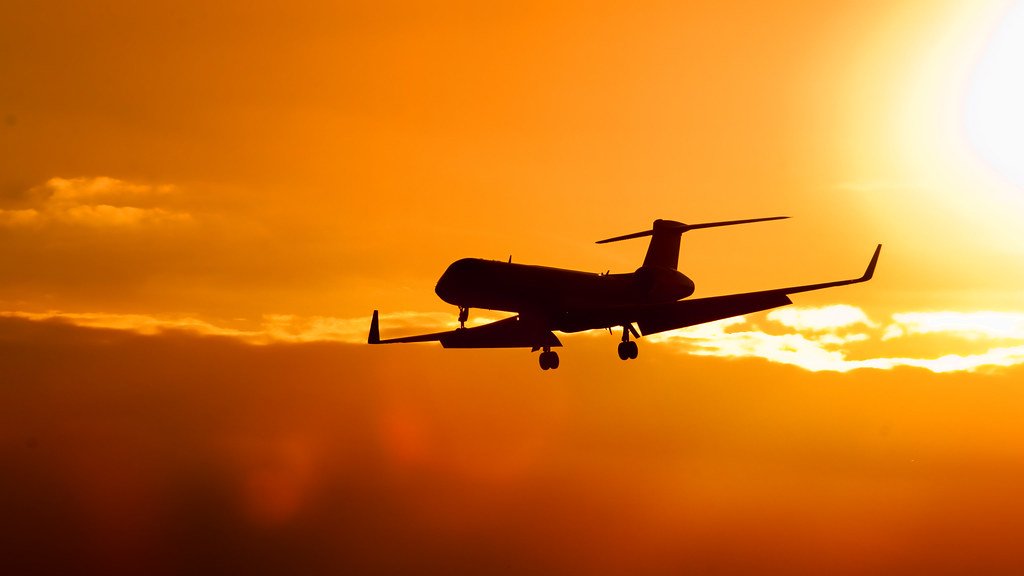
Glossary of Aviation Terms.
Welcome to our glossary of aviation terms. Like every niche or industry, aviation is filled with a plethora of perplexing and bewildering terms. Of course, aviation is rich in technology that is used nowhere else and, therefore, is not familiar to most people.
Our aim here is to cover and explain as many of those terms as possible, as clearly as possible. It is a work in progress as new terms come to hand as new technologies or ways of doing things are introduced. If you feel there are terms we do not yet cover please feel free to leave a comment at the bottom of the page. We will research and add information as soon as possible.
Aviation Terms – A
The ADF or Automatic Direction Finder is a navigational instrument that is used for marine and aviation. The instrument consists of a needle that is mounted over a compass rose.
Its use is to be tuned to radio stations on the ground which broadcast in LW, typically 190 – 535 kHz. These can be either AM stations or purpose-made NDBs (Non-Directional Beacons). Pilots can then either fly toward the beacon or use the direction to work out their relative position.
ADF – Automatic Direction Finder
Ailerons
An aircraft's ailerons are located on the trailing outer edge of the main wings. Their purpose is to control the roll of the aircraft to the left or the right.
For most aircraft, the ailerons are used to induce a turn to the left or right by rolling the aircraft in the direction desired. Banking the aircraft to the left, for example, will induce a turn in that direction. The balance and the smoothness of the turn can be controlled by the rudder and the elevators. The ailerons operate like a movable part of the rear of the wings and are interconnected to each other and the pilot's control column.
As one aileron goes up, the one on the opposing wing goes down. The aileron going down will have a similar effect to a wing flap and create extra lift which will cause that wing to go up. On the opposite wing, the aileron going up will have the opposite effect, reducing lift, and causing that wing to go down.
This will then cause the desired effect of a roll and turn in the direction the pilot desires. These are controlled by turning the control column, or the joystick from side to side.
In this situation, the pilot has moved the control column to the right. The right aileron goes up and thereby reducing lift in the right wing. At the same time, the left aileron goes down and increases the lift of the left wing. This will induce a roll to the right which will result in the aircraft turning to the right.
Auxiliary Power Unit (APU)
On larger aircraft, you may have noticed the exhaust pipe of a smaller engine, usually inside the tail cone of the aircraft. This engine which is a fraction of the size of the main engines is called the APU or Auxiliary Power Unit.
The purpose of the APU is to provide power for aircraft systems such as lighting, air conditioning, and some flight controls while the aircraft is parked at the terminal. In flight, of course, the power is provided by generators attached to the main engines. At most large airports power is provided by ground connections to avoid the running of APUs and thereby reducing noise and pollution.
On twin-jet airliners the APU performs as a backup power source in flight, should both engines fail. This is so that pilots will still have control of the flight surfaces to enable control of the aircraft through the electrical current supplied by the APU. These APUs must adhere to strict standards such as being able to be started ice cold at 41,000 feet. If a twin jet like the Boeing 787 has an unserviceable APU, its ETOPS certification is revoked and it must take a longer route over water not ever being more than 60 minutes from the nearest available airfield.
The exhaust of an APU (Auxiliary Power Unit) is located in the tail section of an Airbus A380.
Aviation Terms – B
Aviation Terms – C
Cockpit or Flight Deck
The aircraft cockpit or flight deck is of course central to the control of the aircraft.
The layout of the control panel can vary from aircraft maker to aircraft maker but on the whole consist of mostly the same instruments. The digital age and glass cockpit have driven the change of many standard analog instruments to now be shown on computer screens.
In modern airliner cockpits, there are generally two pilots. There used to be a third, the engineer, but the engineering tasks have now become part of the pilots’ duties.
Control of the aircraft can be by either a quadrant control attached to the floor in front of the pilot or by a side stick much like a game controller.
This A380 cockpit shows off the sidestick controls, favoured by Airbus as well as the heavy use of computer screens.
Aviation Terms – D
Aviation Terms – E
Elevators
An aircraft's elevators can be found on the trailing edge of the horizontal stabilisers which in turn are located on the empennage. The purpose of elevators is to control the aircraft's pitching attitude. The pilot controls the elevators by pulling or pushing the control column or joystick forward or backward.
Like flaps and ailerons, elevators work by creating more lift when they are in the down position or less lift when they are in the up position.
By increasing lift, so with the elevators down, they cause the rear section or empennage of the aircraft to rise. This reduces the angle of attack of the main wings which then causes the aircraft to start descending. By decreasing the lift with the elevators up, the tail section of the aircraft drops, and therefore, the angle of attack of the main wings causes the aircraft to start climbing.
In this picture, the pilot has pulled back on the control column resulting in the elevator being raised. This reduces lift generated by the horizontal stabilizers causing the tail of the aircraft to sink. This increases the angle of the attack of the main wings causing the aircraft to climb.
Empennage
The Empennage is the section of the airplane found in most cases at the rear of the fuselage. This section includes the tail or vertical stabiliser, including the rudder and the horizontal stabilisers, including elevators.
The empennage, therefore, includes the flight surfaces that control the up and down movement of the aircraft as well as the yaw or side-to-side movement. In some aircraft like the Boeing 727, DC-10, or L1011, engines can also be present in this area.
ETOPS (Extended OPerations)
ETOPS which can also humorously be said to stand for “Engines Turn Or Passengers Swim”, is the ruling that controls the ability for twin-engine aircraft to fly further than 60 minutes from the nearest available airfield on one engine. The ruling is mainly associated with overwater routes but in actuality can be applied to flights over large remote areas as well.
ETOPS has affected aircraft like the Airbus A300, A310, A320, A330, and A350, the Boeing 737, 757, 767, 777, 787, Embraer E-Jets, and the ATR 72. As engine technology has improved and becomes more reliable, the ETOPS restriction has been relaxed.
ETOPS restrictions are applied in a graduated way, where aircraft types are granted higher ETOPS ratings as their service history proves their reliability. For instance, the first level is 60 minutes which means an aircraft must not fly further than 60 minutes (on one engine) from the nearest available airfield. As time goes on and the aircraft proves itself to be reliable this can be increased to ETOPS90, ETOPS120, and so forth.
The advent of the big twin airliners with more reliable engines gaining ETOPS ratings has spelled the end of airliners such as the A340 which had four engines to avoid the ETOPS rulings.
An aircraft's wings are designed for the aircraft to fly at its maximum possible speed, giving lift with the least amount of drag. When, however, the aircraft is about to land or has just taken off, it is flying much slower than its ideal cruise speed. This means the wing might not be able to give enough lift and the aircraft would be susceptible to stalling.
To enable the aircraft to fly safely at lower speeds, most are fitted with flaps. Flaps can come in varying forms, but put simply, they are attached to the rear of the wings, usually more inboard or close to the fuselage of the airplane. The flap function is to either slide back and down or simply drop down by varying degrees as selected by the pilot. The result is that the wing camber, which is the curve of the top of the wing, increases. This has the effect of creating greater lift and also greater drag. The extra lift ensures the aircraft can fly slower safely. You may have noticed increased engine power being applied when approaching to land, which is done to offset the extra drag caused by the flaps.
Aviation Terms – F
Flaps
Fuselage
The fuselage of an aircraft is the main body of the airplane.
In most cases, it is the cigar-shaped piece to which the wings are attached and in which the payload is carried.
Aviation Terms – G
Aviation Terms – H
Aviation Terms – I
Aviation Terms – J
Aviation Terms – K
Aviation Terms – L
Aviation Terms – M
Aviation Terms – N
Aviation Terms – O
Aviation Terms – P
Phonetic Alphabet
The phonetic alphabet was developed to enable radio communications to take place without the danger of misunderstanding the information that was being given. Challenges around unclear radio reception as well as aircrew who were using English as a second language were resolved by using this common method for expressing letters and numbers.
| A | Alpha | B | Bravo | C | Charlie | D | Delta | E | Echo | F | Foxtrot | G | Golf | H | Hotel |
| I | India | J | Julliet | K | Kilo | L | Lima | M | Mike | N | November | O | Oscar | P | Papa |
| Q | Quebec | R | Romeo | S | Sierra | T | Tango | U | Uniform | V | Victor | W | Whiskey | X | Xray |
| Y | Yankee | Z | Zulu | - | - | 1 | Wun | 2 | Too | 3 | Tree | 4 | Fow-er | 5 | Fife |
| 6 | Six | 7 | Sev-en | 8 | Ait | 9 | Nin-er | 0 | Zee-ro | - | - | - | - | - | - |
Aviation Terms – Q
Aviation Terms – R
Aviation Terms – S
Speed Brakes
We know aircraft are built in most cases to travel quickly through the air. However, they also need to be able to slow down when required, such as when they are making their approach to land.
Applying the wheel brakes will have little effect in the air, other than to stop the wheels from spinning inside the wings. This is why most aircraft that fly at faster speeds are equipped with speed brakes which are also known as lift dumpers. There are various styles of speed brakes, but the most common you will see on today's airliners are hinged panels that are affixed to the top of the main wings. These panels are hinged at the front, usually just in front of the wing flaps, and with a hydraulic actuator can be raised and lowered.
The raising of the speed brake on top of the wing serves to disrupt the smooth flow of air over the wing which has the dual effect of reducing the lift of the wing and also inducing more drag. The reduction of lift effect is used to enable an aircraft to descend more quickly without the resultant increase in speed that would accompany a downward trajectory. The increased drag enables the control of the aircraft’s tendency to increase speed in descent.
The speed brakes are deployed on landing touchdown to reduce speed more quickly as well as reduce the lift of the wings and thereby preventing the aircraft from becoming airborne again.
Some aircraft, like the BAe 146 have speed brakes on the tail cone of the fuselage, where the cone opens into two halves which disrupts the airflow and slows the airplane down.
Speed Brakes on this Airbus A321 have been deployed as it touches down. They effectively dump any lift to aid in stopping as well as preventing the aircraft from becoming airborne again.
Speed Brakes on this BAe-146 can be deployed in flight as well as on the ground. This can enable the aircraft to land at a steeper angle which was a requirement when London City Airport opened.
Aviation Terms – T
Aviation Terms – U
Undercarriage or Landing Gear
Undercarriage which is also referred to as landing gear consists of the wheels that the aircraft rolls on whilst on the ground. There are many forms of undercarriage that can firstly be broken up into the categories of fixed or retractable.
Fixed undercarriage is when an aircraft's wheels are always in the down position and cannot be retracted. This is common in many light recreational and training aircraft which don’t require speed and also need to keep their sales prices low.
The retractable undercarriage is what you will find in most airliners and larger aircraft. Once the aircraft becomes airborne, the undercarriage or landing gear can be retracted into the body of the aircraft. Often doors will then close over the undercarriage storage bay. The purpose of this is to create a smooth as possible aerodynamic shape so that the aircraft can achieve acceptable cruising speeds without the drag of protruding undercarriage. Undercarriage configurations may vary from aircraft to aircraft.
In the early days, there was a preference for a wheel under each wing and a smaller wheel under the tail. These are known as taildraggers. Taildraggers can be cumbersome on the ground as often the pilot can’t see straight ahead due to the raised nose attitude. In addition, it is harder for the passengers to board as they have to walk uphill to their seats.
The preferred configuration today is for the tricycle undercarriage where there are wheels under each wing and one under the aircraft nose. The aircraft rides level on the ground.
The number of wheels will vary according to the size and weight of the aircraft. For example, a light aircraft will have three single wheels. On airliners, you will find bogies which can be sets of two, four or six wheels on one assembly. Some military aircraft have far more. Instead of just the three sets, one under each wing and one under the nose, some aircraft may have five different bogies. The Boeing 747, for example, has a bogie of two under the nose and four bogies of four wheels under the wings. This is to spread the weight on runways and taxiways so that stress fractures and cracks don’t appear on the runway surface after multiple landings.
Fixed undercarriage means that the wheels are unable to be retracted.
Tail dragger undercarriage means the third and steerable wheel is under the tail.
Tricycle undercarriage is the most common found in modern airliners.









